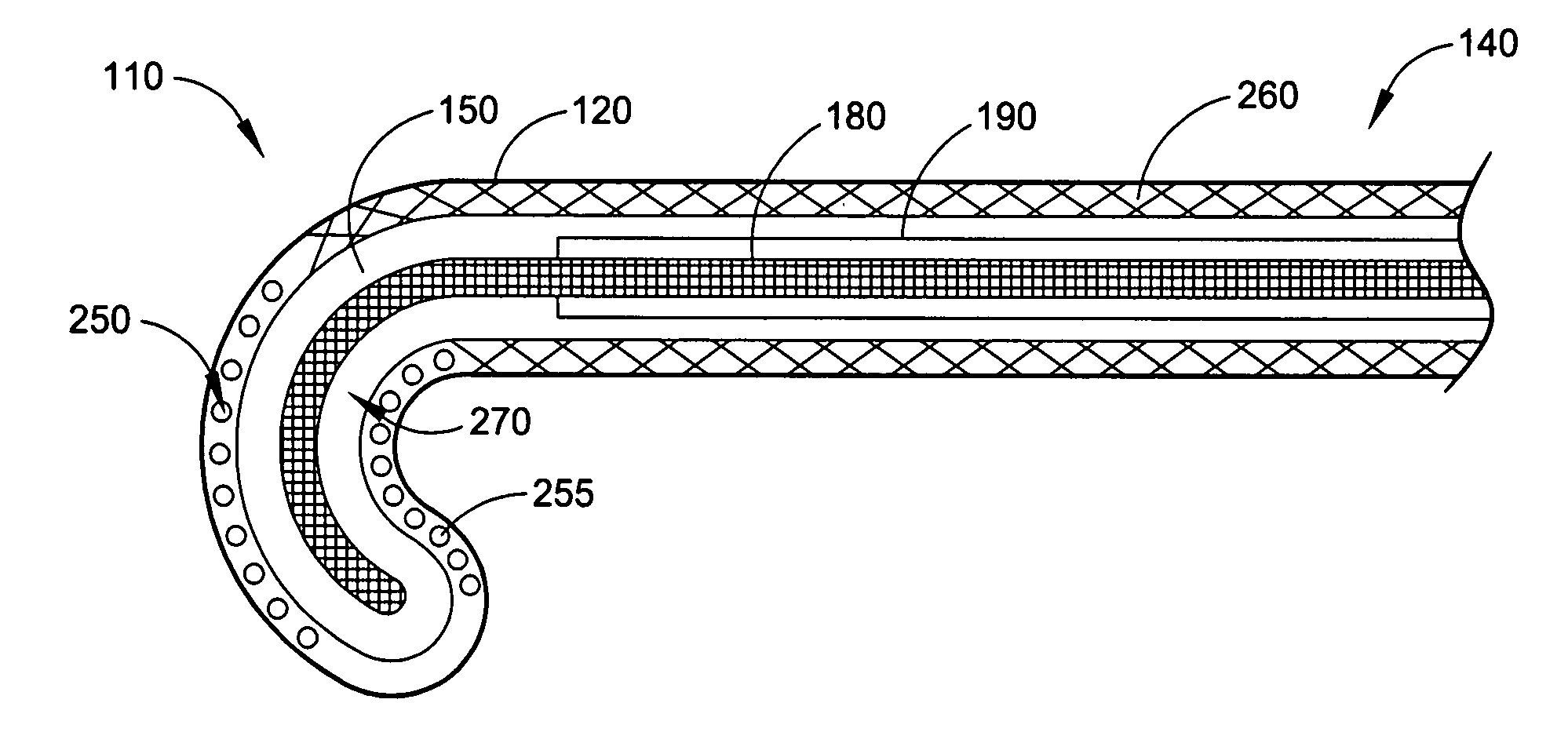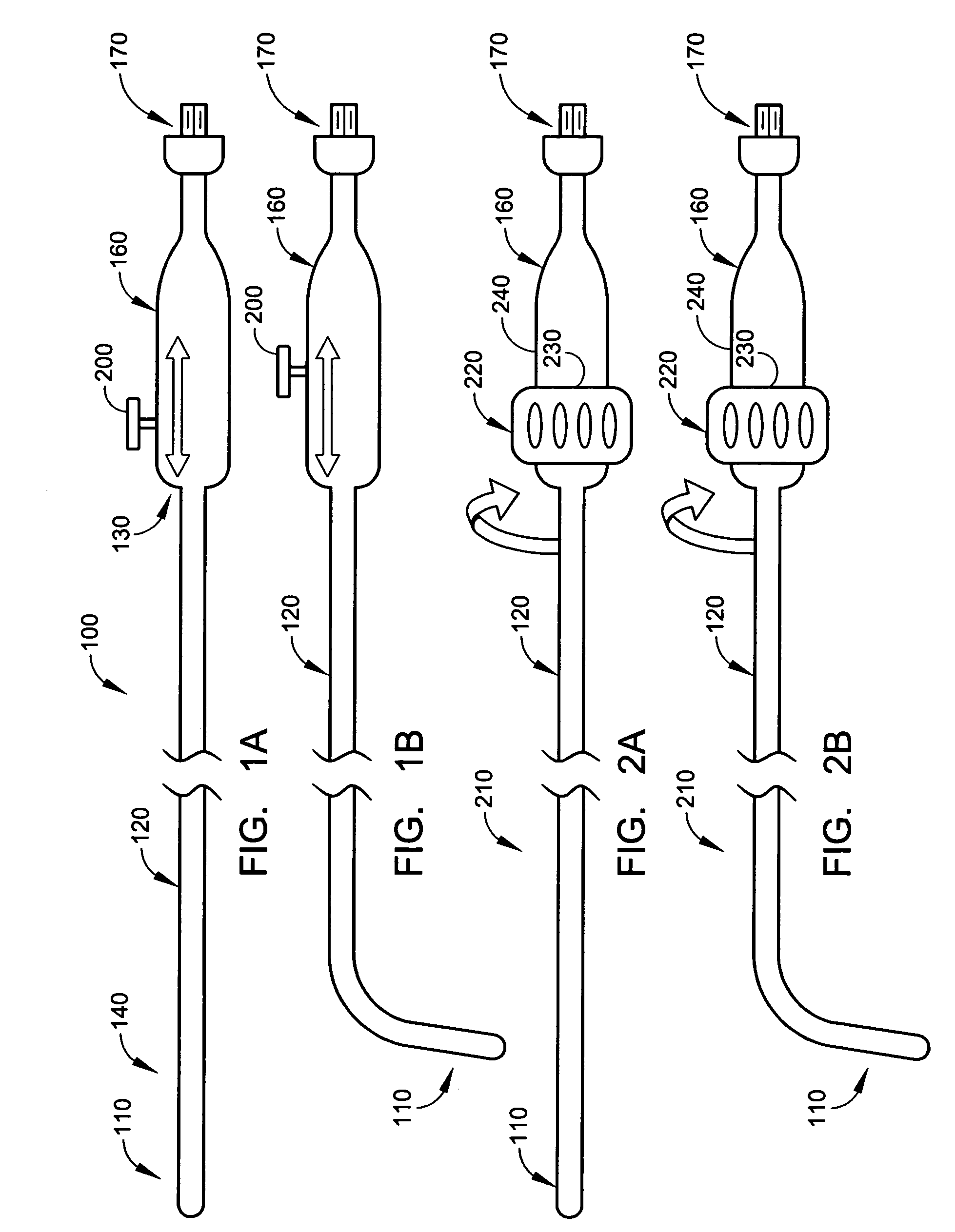Radio-frequency-based catheter system with improved deflection and steering mechanisms
a radiofrequency-based catheter and steering mechanism technology, applied in the field of radiofrequency or microwave powered medical devices and ablation of biological tissues, can solve the problems of a large health care burden, stroke and heart attack, and the inability to widely adopt maze procedures, so as to achieve precise ablation of body tissue, prevent atrial fibrillation, and achieve the effect of preventing atrial fibrillation
- Summary
- Abstract
- Description
- Claims
- Application Information
AI Technical Summary
Benefits of technology
Problems solved by technology
Method used
Image
Examples
Embodiment Construction
[0048]With reference to FIGS. 1A and 1B, a radio-frequency (“RF”) ablation catheter 100 including a shapeable antenna apparatus 110 constructed in accordance with an embodiment of the present invention is shown. The catheter 100 is adaptable for insertion into a body vessel of patient and the shapeable antenna apparatus 110 includes a radio-frequency antenna for delivering electromagnetic energy to a treatment site. The catheter 100 will first be described before describing the shapeable antenna apparatus of the present invention.
[0049]The catheter 100 has a flexible elongated tubular body 120 with a proximal portion 130 and a distal portion 140. One or more intracavity lumens 150 (FIGS. 3A, 3B) extend from the proximal portion 130 of the catheter 100 to the distal portion 140. Located at the proximal portion 130 of the catheter 100 is a handle chassis 160 for housing necessary steering and positioning controls, as will be described in further details below. Incorporated at a proxim...
PUM
 Login to View More
Login to View More Abstract
Description
Claims
Application Information
 Login to View More
Login to View More - R&D
- Intellectual Property
- Life Sciences
- Materials
- Tech Scout
- Unparalleled Data Quality
- Higher Quality Content
- 60% Fewer Hallucinations
Browse by: Latest US Patents, China's latest patents, Technical Efficacy Thesaurus, Application Domain, Technology Topic, Popular Technical Reports.
© 2025 PatSnap. All rights reserved.Legal|Privacy policy|Modern Slavery Act Transparency Statement|Sitemap|About US| Contact US: help@patsnap.com



